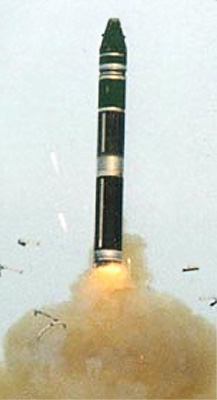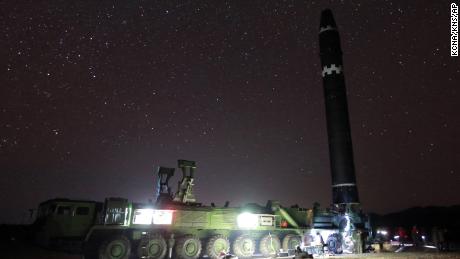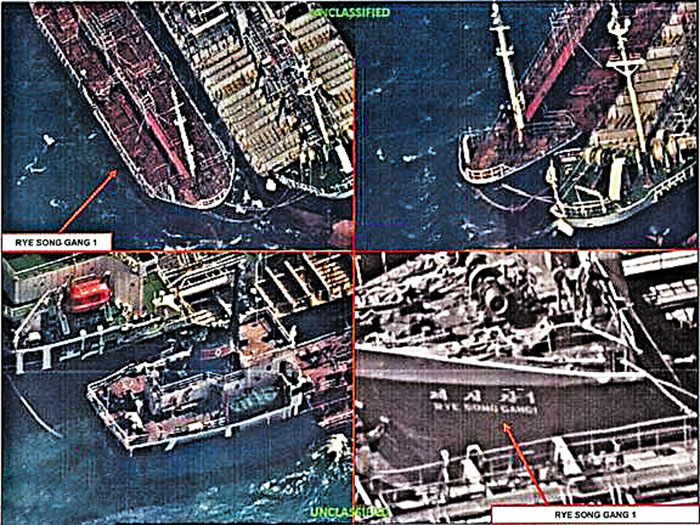The headquarters for Office #39 sits in downtown Pyongyang, not far from Kim Jong-il’s official office building, and very close to the Koryo Hotel—which is often frequented by foreign tourists. Through its offices in Pyongyang, it operates through government and KWP-run front companies such as Daesung Chongguk (which has been known to have offices in Austria), and Zokwang Trading Company
(which has an office in Macao). All of the many front companies in the web that runs North Korea’s diverse illicit activities answer directly to the building in Pyongyang that houses Office #39. This Office, in turn, answers directly to Kim Jong-il, who is known to often oversee the actual disbursement of funds derived from its many activities. In the past, Macao was one of the key operating centers for the companies that answer to Office #39, and was often seen as the center overseas point. In Macao, dozens of North Korean “merchants” holding diplomatic passports ran the nerve center for many of North Korea’s operations in East Asia and other areas of the world for several years—keeping what worked out to be a de facto consulate running from the small island city. The diplomatic status of the North Koreans, combined with Macao’s lax banking laws, made
it relatively easy to literally launder suitcase loads of counterfeit money, or money earned from drug operations (among others) through banks in the former colony of Portugal. Pyongyang has also reportedly used these banks to deposit and/or exchange currency used in missile deals and other deals relating to weapons of mass destruction (WMD) projects that North Korea has proliferated in recent years.

Kim Jong-il reportedly maintains a slush fund from these activities worth billions of dollars, and has used banks in Macao and banks in Switzerland (among others) in the past, to hide funds that can be used for whatever purpose is designated as being for the good of the people. Interviews conducted by reporters from the Wall Street Journal with intelligence officials in East Asia produced estimates that the slush fund generated by Office #39 amounted to hard currency in the vicinity of $5 billion.11 Recent pressure from the U.S. Government on banks in Macao (beginning in 2005), and publicity regarding holdings in Switzerland, may have caused a number of the secret bank accounts to be moved to banks in Luxembourg.12 During August 2006, other reports surfaced alleging Pyongyang had moved some of its monetary accounts to a bank in Singapore.13 Events initiated by the U.S. Treasury Department caused Macao’s banking regulators to freeze $25 million worth of North Korean accounts in the Banco Delta Asia, the most notable of the “Macao Connections” that the U.S. Government had singled out. Press reports indicated that Zokwang Trading Company, the primary front company for illicit activities centered in Macao, closed its headquarters on the fifth floor of an office building near Banco Delta Asia. Reportedly, most of its personnel have relocated to Zhuhai, just across the border in China proper. An analysis of the network that exists for North Korea’s illicit activities shows that a plethora of front companies under the auspices of Office #39 have become the important moneymaking operation that is not only used for an illegal slush fund, but to sponsor a wide variety of actions the government and the KWP in Pyongyang would otherwise be too short of funds to accomplish. The line of control runs from Kim Jong il, to the front companies, to the activities that they carry out, and then back to Kim Jong-il as the profits from these activities roll in. As the next section will demonstrate, this KWP operation has been ongoing since the mid-1970s (but has apparently increased in scope in the past 10 years), and its complexity shows that the North Korean regime is not only effective in conducting these activities through front companies and banks willing to launder their money, but they are also effective at keeping their operations covert.
Drug Trafficking.
Drug trafficking by Office #39 is another aspect of criminal sovereignty because it plays to North Korea’s distinct advantages as a nation-state. While organized crime and terrorist and insurgent groups involved in drug trafficking must contend with circumventing state authority and avoiding interdiction at each node of the trafficking network, North Korea grows, manufactures, processes, warehouses, and transports
drugs freely. North Korean refugees describe the country as a “narco-state in which all aspects of the drugs operation—from school children toiling in poppy fields to government-owned processing plants to state-owned cargo ships and trading companies— are controlled by Kim [Jong-Il].”15 In short, there is no government to circumvent; in fact, the state itself actively participates in all levels of drug production
within the country. “State collective farms and youth brigades [are] used to produce opium to earn hard currency. Villages had to meet production targets, and the military helped with distribution.”16 According to North Korean defector Kim Young-il, North Korea began its illicit drug production in earnest during the late 1970s, and opium produced on farms is sent to pharmaceutical plants in the Nanam area of Chongjin
in Hamkyong Bukto Province where it is processed into heroin.17 International aid workers assisting North Korea during its famine in the 1990s reveal the level of state penetration in heroin production. We could not figure out why farmers that I interviewed said they had a third of their land in their villages not farmed. There is a certain Korean word they used, “Pomyong.” Recently, we learned that the term in North Korea means the land is put aside for poppy production. They shrewdly substituted a word for “fallow land” for poppy production. So it is actually state-managed, state-run, and there is an allocation made in state farms for actually producing poppy. It is not illegal. It is encouraged. State-supported drug production, however, is not for domestic consumption. The major narcotics that North Korea produces are heroin and methamphetamine, which are exported around the region and around the globe. North Korea must still circumvent international law and domestic laws of other countries to turn a profit. Once again, North Korea is able to leverage its powers as a nation-state to aid circumvention. Office #39 facilitates the international distribution of narcotics by using national assets such as military and commercial vessels for transportation, diplomatic personnel to sell to wholesale markets, and state-owned businesses to launder the profits to escape seizure. The depth and scope of North Korea’s trafficking capabilities can be seen in the examples of interdiction that have occurred over the years.
Much of the drug transportation to the wholesale drug markets run by underworld groups is done with North Korean ocean-going vessels. North Korean ships have been known to rendezvous with Japanese vessels in North Korean territorial waters to transfer narcotics. However, North Korean military vessels have ventured in other territorial waters to conduct drug drops. In 2001, the Japanese Coast Guard and
a North Korean ship exchanged fire, resulting in the sinking of the North Korean naval vessel that was operated by North Korean special forces. Japanese authorities subsequently determined that the North Korean ship entered Japanese waters to deliver methamphetamines
to Japanese Yakuza members.19 In the following year, Taiwanese authorities stopped and searched a Taiwanese fishing trawler which contained
174 pounds of heroin that it had received from a North Korean gunboat.20 In 2003, Australian police arrested three men in a coastal village west of Melbourne who had received $50 million of street-ready heroin from a dinghy launched by the state owned North Korean ship, Pong Su, which lay just off shore. North Korea has used its merchant fleet to act as a middleman for other groups involved in drug trafficking by bartering
other goods, such as weapons, in exchange for drugs. A North Korean vessel laden with small arms was detained by authorities in Myanmar who believed that local insurgent groups were intent on trading heroin for the arms. North Korea has also used its diplomatic corps to aid
the transport of drugs directly to wholesale markets that lie in specific countries. This was particularly evident in the 1990s, but stretches as far back as the 1970s. In 1977, after only 3 years of diplomatic ties, Venezuela expelled all North Korean diplomats for trafficking drugs. In 1996, Russia arrested a North Korean envoy with 50 pounds of heroin in his possession.23 In 1998, Egyptian police arrested a North Korean diplomat who was attempting to smuggle 500,000 tabs of rohypnol (also known as the “date rape drug”) into Egypt while Russian authorities arrested two North Korean diplomats in possession of 35 kilograms of cocaine. Later the same year, German police arrested the North Korean deputy ambassador who possessed heroin that was believed to be manufactured in North Korea, and Chinese authorities arrested a North Korean consulate employee with 9 kilograms of opium. However, with the exposure of its use of diplomatic personnel for distribution of drugs to the wholesale market, North Korea was forced to adapt by outsourcing this portion of drug trafficking to organized criminal groups such as the Yakuza. Once again, North Korea was able to take advantage of its power as a nation-state. For criminal organizations, a state partner offers a
steady supply of high quality drugs, escape from the inefficiencies associated with avoiding enforcement, and resources exceeding those of a typical nonstate group. For North Korea, this arrangement balances risk reduction with satisfactory profit, capitalizing on the state’s competitive advantage in creating an enforcement-free production environment, eliminating competition over distribution, and obtaining cover
of plausible deniability. Such partnering with organized crime has reduced North Korea’s exposure to interdiction efforts, and has led several countries like the United States, China, and Russia to focus on how to trace and intercept the regime’s proceeds. North Korea’s ties to organized
crime in Asia, and elsewhere, appear to be both diverse and extensive. They have reportedly engaged in sophisticated drug drops at sea with the Yakuza from Japan (using Special Operations Forces). North Korean drug smuggling has also been linked to the Russian Mafiya and other organizations in Europe and Southeast Asia.29 Pyongyang has even been establishing links with Taiwanese organized crime syndicates—reportedly inviting members to North Korea for meetings. Receiving and laundering the proceeds of drug trafficking has largely been done through foreign banks in China, Switzerland, and Luxembourg. However, North Korean banks, namely Banco Delta Asia, have been at the forefront. The Macao branch of the bank has faced ever growing scrutiny by the international community and tighter controls by Chinese
authorities. As previously discussed, $25 million of the bank’s assets in Macao were frozen in 2005, and more stringent requirements for opening of new accounts appear to be taking their toll.31 In an effort to avoid further scrutiny and tighter controls, it appears that Office #39 has once again turned to North Korea’s diplomatic corps. In February 2006, North Korean diplomats were caught smuggling $1 million and 200
million yen in cash into Mongolia.
Counterfeit Currency Operations.
North Korea’s long history of illegal drug manufacture and sales all over Asia has now become fairly well known. But until recent years, one of its other sources of hard currency for Kim Jong-il’s slush fund was not as well known—counterfeit currency. Part of the 2005 action undertaken by the U.S. Government against banks in Macao was to staunch Office #39’s laundering of counterfeit United States $100 bills.33 The U.S. Secret Service has said on several occasions that the North Korean-manufactured counterfeit U.S. $100 bills currently in circulation are the most sophisticated in the world (thus leading to their widely used nickname—”Supernotes”). North Korea’s counterfeit currency operations are
extremely sophisticated and run by skilled experts. According to press reports, high-tech equipment from Japan was acquired to manufacture the bills, as well as paper from Hong Kong and ink from France. By 1989, millions of dollars of this fake American currency was being distributed worldwide. It is probably important to point out at this point that North Korea is the only government in the world known to be running
a counterfeit money operation as a matter of state policy.35 The North Korean counterfeit distribution network includes diplomats, Chinese gangsters, organized crime syndicates in Asia and elsewhere (possibly Russia), banks (especially in Macao), and criminals associated with the Irish Republican Army. Defectors alleged in 2005 that a factory in the city of Pyeongseong prints the counterfeit $100 bills—and
this assessment was also supported by recent travelers to North Korea and China. According to press reports, the bills have often been exchanged with Chinese merchants at 50 percent of their value and then mixed in with real bills. North Korean intelligence services have reportedly used the Supernotes to finance activities overseas, and even for foreign purchases made on behalf of Kim Jong-il. The counterfeit U.S. banknotes were discovered in Manila, the Philippines, in 1989, and months later were also unearthed in Belgrade, Serbia. The bills have also surfaced in a diverse set of places such as Ethiopia, Peru, Germany, and once again, Macao.38 The bills have even surfaced in Lebanon’s
Bekka Valley.39 According to Yonhap, the semi-official information arm of the South Korean government, the number of bogus U.S. bills detected in the country has increased since 2005—again mostly in $100 bills, and again, likely from North Korea.40 The Supernotes
have even surfaced in Las Vegas, Nevada—reportedly first during 2005. In 2007 a Chinese businessman was arrested there who was apparently using the casinos to help launder the bills that he had acquired from the North Koreans. The bills have also been linked to North Korea’s WMD proliferation—as reportedly they are sometimes used in transactions. In 2006, a 3-month investigation by the Chinese government, of accusations that North Korea was using banks in Macao to launder counterfeit profits, confirmed suspicions raised by the U.S. Government. South Korean diplomats revealed to the press that Chinese officials had expressed their concerns regarding the counterfeiting of U.S. currency to a North Korean delegation during a visit to Beijing, China, by Kim Kye-kwan (a highly placed North Korean diplomat holding the title of Vice Foreign Minister).42 North Korean counterfeit U.S. bank notes reportedly surfaced in Hong Kong during February 2006.43 In what was
probably an indicator of concern in Beijing, in March 2006, the Peoples Bank of China issued a directive to financial institutions to “increase vigilance” against fake $100 bills.





